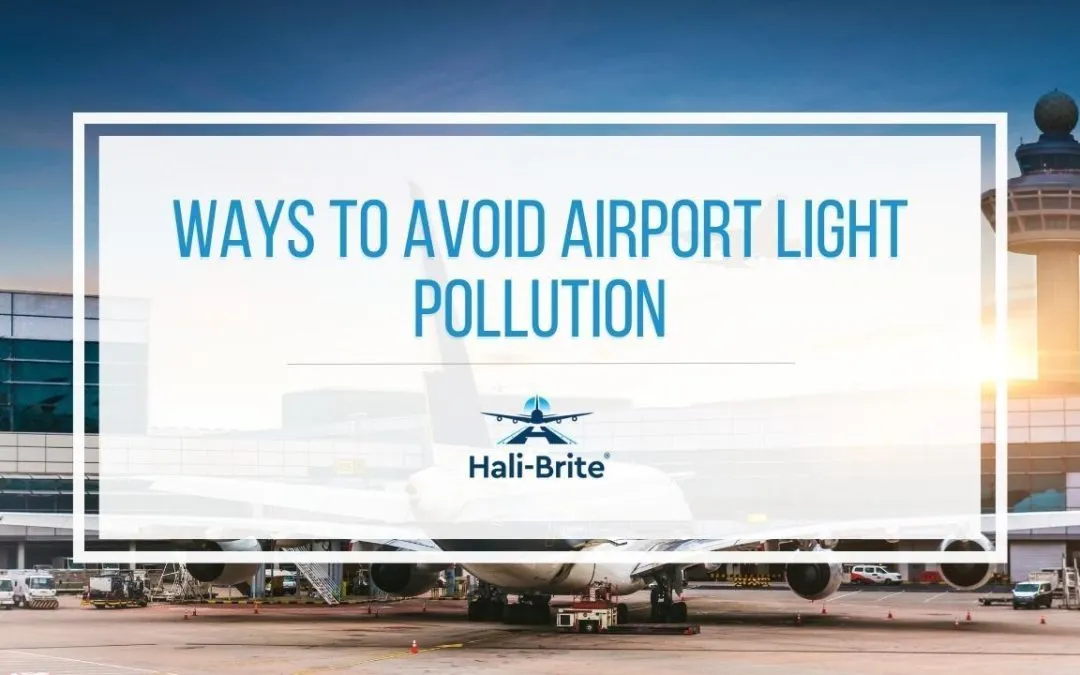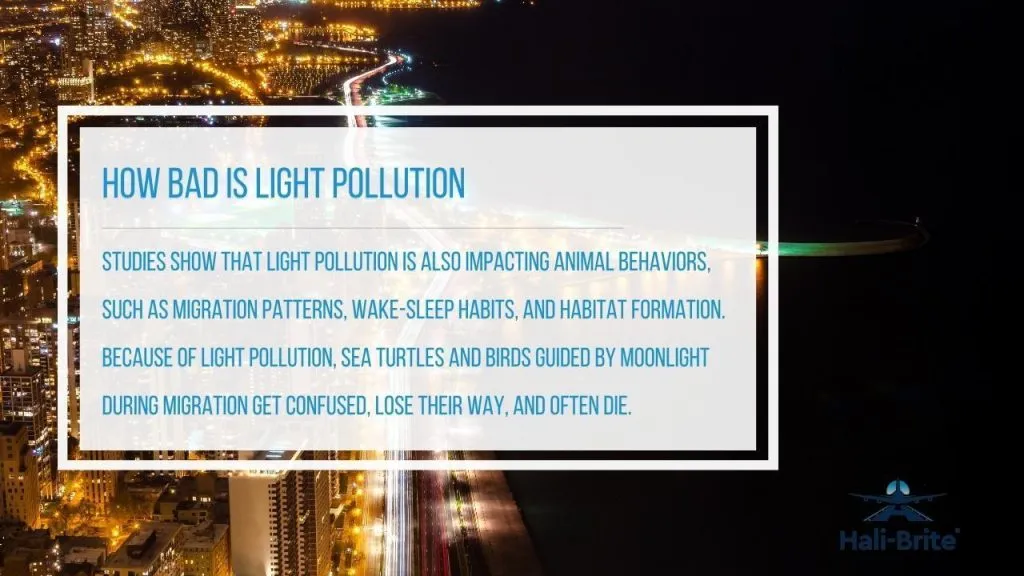Artificial lights have become an essential part of our daily lives. Most households and establishments are equipped with light sources, providing visibility in low light conditions. Too much use of artificial lighting, though, can result in what is termed light pollution.
Light pollution is the consequence of using light excessively. Light pollution can be in the form of glare, skyglow, light trespass, or clutter, which can negatively affect our health and the environment.
Lighting systems are crucial in airport operations. Airfield lighting systems enable airports to operate at night. However, some airport lighting can often be utilized inappropriately, contributing to the increase in light pollution.
This article discusses the various ways to avoid light pollution in airports, while also identifying some equipment that can be useful in reducing airport light pollution.
5 Ways to Avoid Light Pollution
Efficient use of lighting systems is crucial in reducing the harmful effects caused by light pollution. Here are five ways to avoid light pollution in airports:
Turn Off Nonessential Lights
Turning unnecessary lights off is the cheapest and most effective way to reduce airport light pollution. When there are no ongoing operations, some airport facilities are left unoccupied. For example, terminals are empty when there are no scheduled flights. Switching the lights off during this period helps reduce light pollution. In addition, turning off unused lights reduces energy consumption, saving money on energy costs.
Switch to LED
Several airports are switching towards the use of LED for their lighting systems. Compared to traditional incandescent bulbs, LEDs are more energy efficient, economical, and durable. Additionally, current LEDs can be combined with recent technologies that can automatically dim or switch off the light.
Reduce Decorative Lighting
Some airports still contain an excessive amount of decorative lighting, primarily used for aesthetic reasons. Even though they are visually appealing, needless ornamental lights will typically consume a lot of electricity and contribute significantly to light pollution. Airports should only use decorative lighting systems when absolutely necessary.
Use Controlled Lighting
Modern airport lighting systems are now integrating newer technologies, such as dimmers, sensors, and time switches, allowing operators to control the emitted light. Using such technological advancements can considerably reduce airport light pollution. For instance, a LED with dimmer control enables you to reduce its brightness level, while unused lights can be turned off automatically using sensors and timers.
Some airports use airfield lighting control and monitoring systems (ALCMS) to control and monitor airfield lighting systems, including runways and taxiways. Using the ALCMS, operators can automatically adjust the lighting intensity of airfield ground lighting (AGL) systems.
Apply Daylighting System
Daylighting is an airport design strategy that incorporates natural light with artificial airport lighting systems. Daylighting systems utilize sensors that enable the airport lighting systems to respond to the brightness of daylight and adjust the light levels accordingly. Such a system significantly helps minimize the use of excessive artificial lights, further reducing airport light pollution.
Equipment That May Help Achieve Reduced Light Pollution in Airports
Certain equipment can be employed in airfield lighting systems to help reduce airport light pollution. Here are some of them:
Light-Emitting Diode (LED)
Modern LEDs used on airport lighting systems have targeted and controlled lighting features, which are essential in reducing light pollution. Targeted LEDs minimize light spills by only directing the light beam towards the intended area. The Airport LED Rotating Beacon L-801A(L) from Hali-Brite is an example of airport lighting equipment equipped with a targeted LED lamp that provides less light wash.
However, there are specific airport facilities where LED use is not recommended. For example, LEDs are not ideal for runway lights. Since LEDs don’t emit heat, frost can build up and block the light source during colder climates. Furthermore, some LEDs without dimming control can be overly bright and become a visual hazard for aircraft pilots. Thus, low-intensity incandescent lamps, such as Hali-Brite L-860 Low-Intensity Elevated Runway (LIEL) Light, are commonly utilized for airport runway lights.
Occupancy Sensor
Occupancy sensors detect people that occupy a particular area. When the area becomes empty, the light automatically turns off. Airport facilities with fixed schedules, such as terminals, can employ this technology. Terminals with occupancy sensors can detect when the area is without occupants. If there’s no scheduled flight, or the terminal is shut down, the sensors will automatically shut off the area’s lighting.
Timed Switch
Timed switches are devices that automatically turn the lighting systems on or off at a programmed time. Unlike occupancy sensors, a timed switch does not detect the presence of people within the area. The time switch will turn on or off the lights when it reaches the set time, regardless of occupancy. Timed switches are also less expensive to install than other types of sensors.
Dimmer Control
Dimmer controls enable brightness adjustments of lighting systems rather than just turning the lights on or off. Operators can adjust the light intensity to fit the surrounding ambient lighting using a dimmer control. In cases when you are hesitant to turn off the lights in unoccupied areas for safety reasons, you can simply lower the brightness of the lights. This option can simultaneously increase safety and lessen light pollution.
Helping You Improve Your Airfield Lighting System
Choosing the appropriate lighting system ensures that you don’t contribute to the growing light pollution problem. Hali-Brite is here to help you improve the efficiency of your airfield lighting system. We can supply you with FAA-approved airfield lighting equipment that produces minimal light pollution. Feel free to contact us here and get your free quote!


